What makes a good Dolby Atmos soundbar?
Take your home cinema sound to a whole new level with truly immersive audio
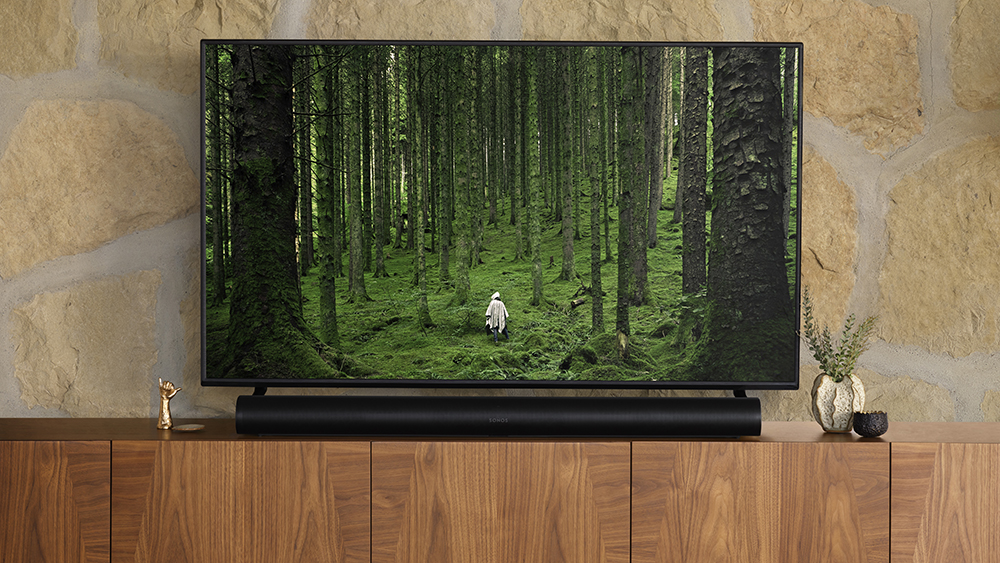
Do you remember when you went from SD to HD, or from HD to 4K? Upgrading to one of the best soundbars with Dolby Atmos is like that, but for your ears. It adds a whole new level of immersion to your movies and TV shows, and with the right kit it can do some amazing things with music too. It’s one of our very favourite home entertainment upgrades and we’d recommend it for any TV.
While Dolby Atmos is available in a wide selection of the best AV receivers, a Dolby Atmos soundbar is without doubt the simplest and most hassle-free way to improve your home cinema sound. It’s often the cheapest way too. Here are the answers to the questions you may have.
What is Dolby Atmos?
Dolby Atmos takes surround sound to a new level by enabling sound mixers to position objects vertically as well as horizontally. We’re all familiar with stereo and surround sound, where objects appear to be coming from either side (and with surround setups, from behind us too). With Dolby Atmos, objects can also be positioned above you. So when that helicopter flies overhead, it sounds like it’s actually there.
Although Dolby Atmos is most noticeable in action scenes, it’s also very effective in the quiet bits. Outdoor spaces sound more airy than before, and public spaces like transport hubs sound so much more lifelike.
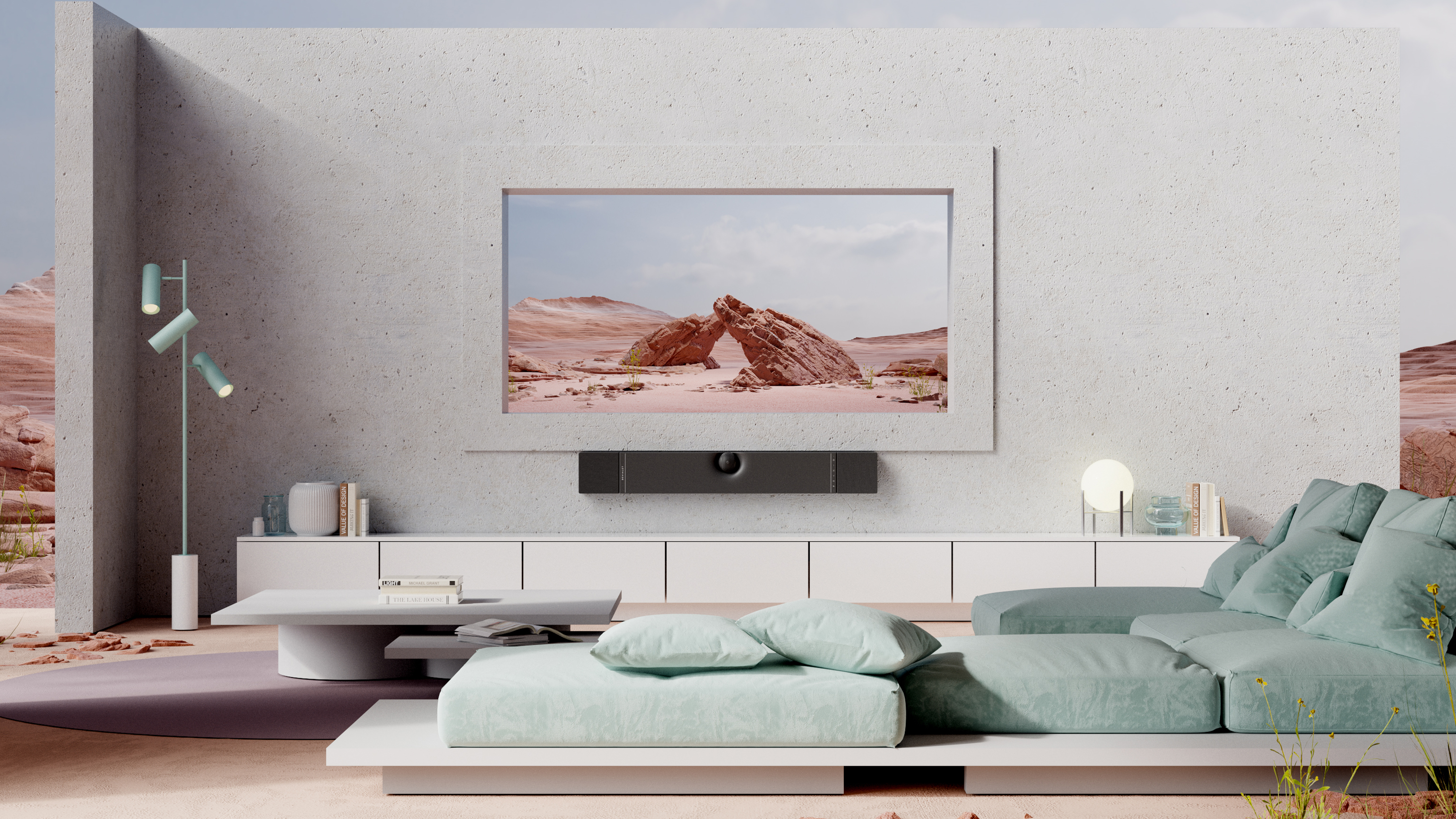
Do you want dedicated Dolby Atmos speaker drivers?
Dolby Atmos soundbars can deliver immersive audio in two ways: through virtualization, and through the use of upward-firing speaker drivers.
Virtualization is a software solution. It uses advanced audio processing to create the impression of height, using height-cue filters to mimic the cues that tell our ears something’s happening at a certain elevation. You might have encountered similar processing in some gaming or spatial audio headphones.
That’s the software solution. The hardware solution is to have dedicated speaker drivers for the vertical channels, and in a soundbar that means having upwards-firing speakers that bounce sound waves off your ceiling. To our ears it’s much more natural, convincing and immersive.
Get daily insight, inspiration and deals in your inbox
Sign up for breaking news, reviews, opinion, top tech deals, and more.
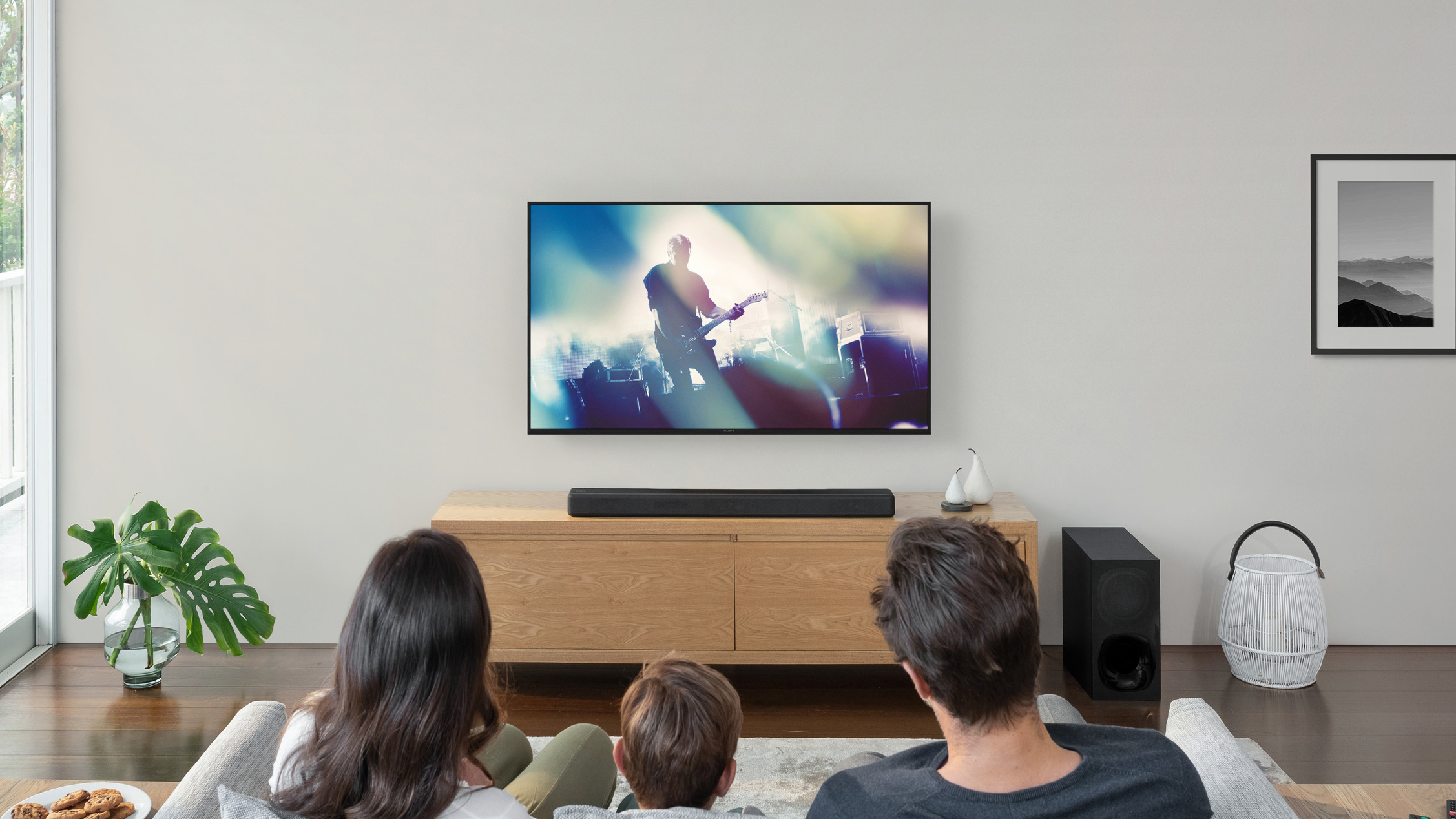
Do you want a one-box solution or full surround sound?
Some Dolby Atmos soundbars are designed to be used solo. But others include, or can be part of a system that includes, subwoofers for low-end thump, upward-firing speakers for better vertical positioning and rear speakers for 360-degree surround sound.
Our current best soundbar pick, the Sonos Arc, can be used in multiple ways: it’s powerful and detailed enough to work really well as a stand-alone system, but you can also upgrade it to make it even punchier and more immersive with a pair of Sonos One SL or Sonos Five speakers as rear channels, and/or a Sonos Sub.
Others, like the Sony HT-G700, come with a subwoofer as standard.
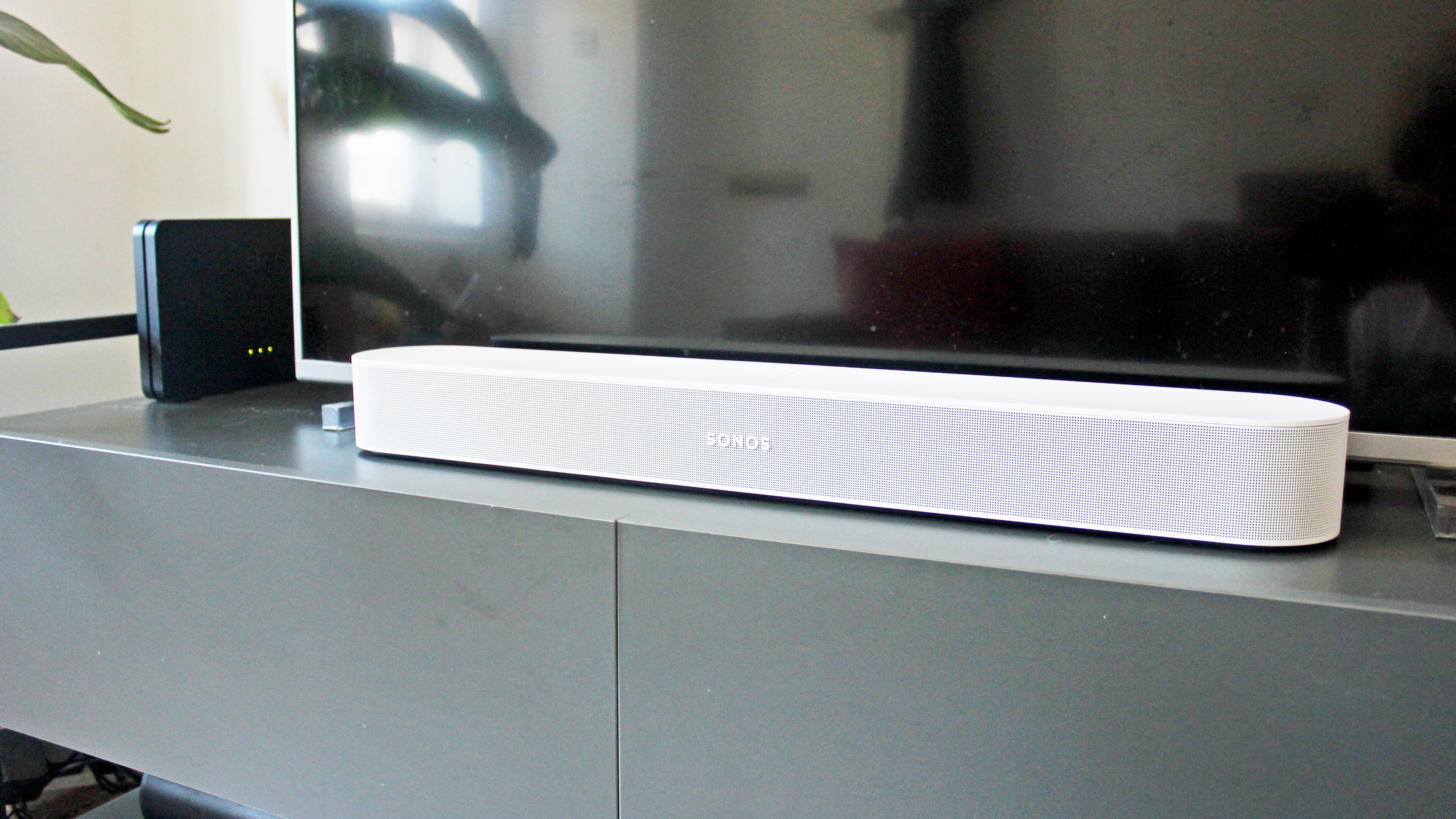
Make sure you get the right fit
Soundbars are generally designed to sit immediately underneath and slightly in front of your TV, although some can also be wall mounted. But not all TVs have stands that are soundbar-friendly, and there’s a lot of variety in soundbar shapes and sizes too – so for example while the Sony HT-G700 is 6.4cm (2.5”) high the Sonos Arc is 8.5cm (3.35”), making the latter too tall for your writer’s Samsung TV.
Width is a factor too. The Arc is 45 inches wide, so it’ll dwarf smaller TVs; if you’ve got a 32-inch to 40-something TV you’d be better with the small Sonos Beam 2nd Gen or a similarly small rival such as the LG Eclair.
Do you want a soundbar that also listens?
Some soundbars don’t just produce sound. They listen too, either in the form of personal digital assistants (Alexa and Google Assistant are the most common options) or by having room optimisation features when you first install them that play a test signal, analyse how it bounces around your room and adjust the soundbar’s audio output to deliver the best possible audio.
That’s overkill if you’re not seriously into sound, but if you’ve dropped big money on one of the best TVs you’ll want the sound to be as accurate as the picture.
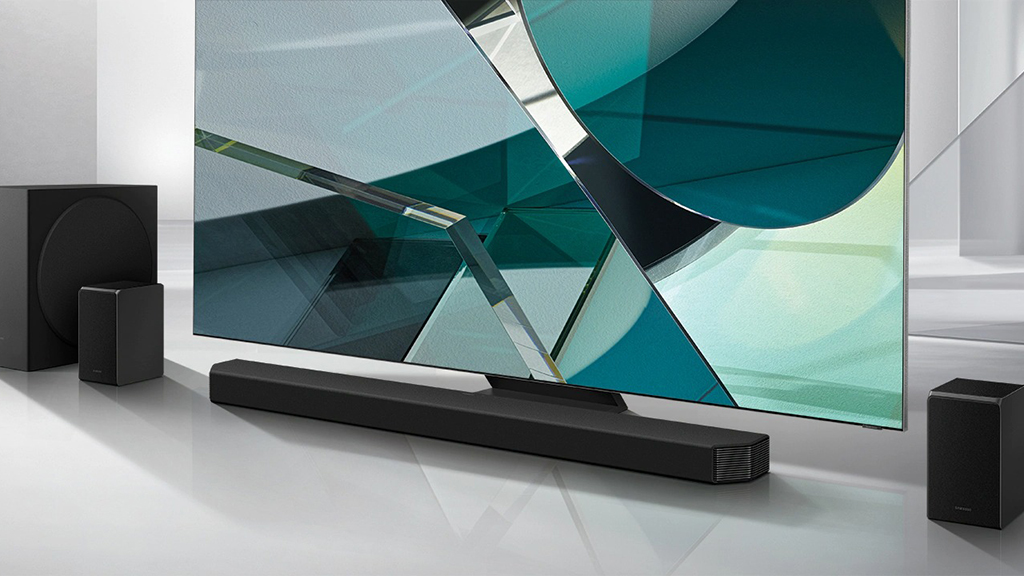
More speaker drivers usually means better Atmos
Every soundbar contains multiple speakers, so for example a Sonos Arc contains eleven including two upwards-firing speakers, the Sony HT-G700 has three plus a subwoofer and the Samsung HW-Q950A has 22 built-in speakers when you include the two satellite speakers and a sub.
As with other surround sound systems, you’ll see the full system configuration described with numbers: X.Y.Z, where X is the number of surround audio channels, Y is the number of bass speakers (usually a subwoofer) and Z is the number of height speakers. So a 3.1 system would have stereo and center speakers plus a subwoofer; 3.1.2 would have the same plus two height speakers.
You often have multiple speakers combined into different channels, so a soundbar might have eight or nine speakers, but delivered in five channels. This helps give each channel clarity and dynamic range.
In soundbars designed as stand-alone models you’ll often find one or more bass radiator. These aren’t speakers; rather, they’re a way of getting much more low-end thump out of relatively small speaker drivers. To do that they funnel the air pressure from those speakers through an enclosure containing a diaphragm, which vibrates just like a speaker cone does and produces more boom without requiring any additional speaker components or electricity.
You’ll find radiators in a lot of the best smart speakers and the best Bluetooth speakers too as it’s a very efficient way to make smaller drivers deliver more volume.
What connectivity options does it have?
Soundbars typically connect via HDMI to your TV’s ARC or eARC HDMI port, with the TV sending the soundbar the audio signal. eARC is the newer and better standard, because it allows for lossless audio. ARC can still take Dolby Atmos, but not at the highest possible quality – if you're not buying a high-end speaker, this won't matter so much.
Some Samsung soundbars and Samsung TVs can recognise one another when connected over HDMI and work together, with the TV acting as the dialogue speaker while the soundbar handles the rest of the audio.
eARC isn’t the only way to connect. Some soundbars have additional wireless connectivity via Wi-Fi or Bluetooth, enabling them to receive streamed audio from other devices via AirPlay 2 or Google Cast or via the manufacturer’s own app. And some have optical inputs enabling you to connect other audio sources.

How does it handle other audio formats?
Dolby Atmos isn’t the only audio format or codec you’ll encounter, so it’s important to check the specs to ensure that your potential purchase will play nicely with your other audio sources.
On DVDs there’s Stereo PCM for two-channel audio or Dolby Digital for 5.1 surround, and with Blu-ray discs and movie downloads you’re likely to encounter Dolby TrueHD and DTS/DTS:X/DTS-HD Master Audio.
For gamers, the PlayStation 5 outputs stereo or surround PCM sound over ARC, but Sony’s console doesn’t support Dolby Atmos in games. The Xbox Series X does, and it also supports DTS:X.
Some gamers say the latter is a little less abrasive at higher volumes and that it’s better at upsampling audio; others say that Atmos is more immersive and more precise.
Both consoles can pass Dolby Atmos sound through to a TV when playing 4K Blu-rays.
Writer, broadcaster, musician and kitchen gadget obsessive Carrie Marshall has been writing about tech since 1998, contributing sage advice and odd opinions to all kinds of magazines and websites as well as writing more than a dozen books. Her memoir, Carrie Kills A Man, is on sale now and her next book, about pop music, is out in 2025. She is the singer in Glaswegian rock band Unquiet Mind.
